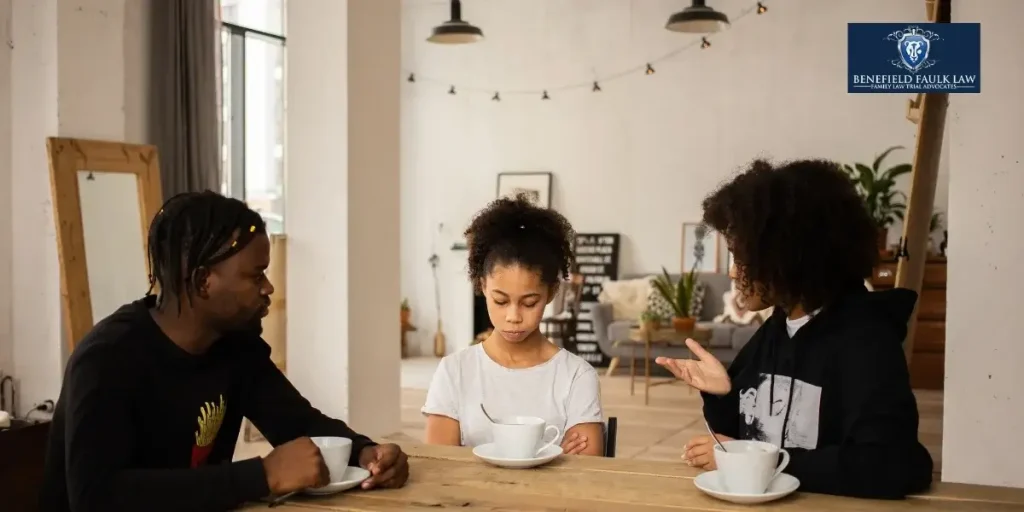A restraining order is typically filed to protect the filer from harmful behavior by the recipient of the order. However, in some cases, this may be applicable to a parent-child relationship. Some may wonder, can a minor seek a restraining order against a parent? The short answer is yes, but it comes with regulations.
When Can a Minor File a Restraining Order?
A minor who faces abuse or threats from a parent or legal guardian can request a protective order under California law. California courts take claims of domestic violence impacting a child very seriously.
Protective orders in domestic restraining order cases with minors include stay-away orders, as well as residence exclusion orders and no-contact orders. In California, a parent or guardian, or an adult appointed by the court to file a restraining order on behalf of the minor, can file the request. However, under certain circumstances where domestic violence may be severe, the minor themselves, if they are over the age of 12, can petition the court for an order.
Some of the reasons a restraining order may be requested against a parent include:
- Physical abuse
- Threats of imminent harm
- Other forms of abuse, such as emotional or sexual abuse
- Neglect
In California, typically, a temporary restraining order is issued that can last up to 25 days and is followed by a hearing to determine if a permanent order should be issued.
How To File a Restraining Order as a Minor
One of the most common reasons for filing a restraining order against a parent is instances of abuse and neglect. According to the CDC, at least 1 in 7 children experience child abuse and neglect. However, this number could be higher since many cases are not reported. In 2021, there were 1,820 children who died in the country due to abuse and neglect.
If a minor is a victim of abuse and his or her parent, legal guardian, or another responsible adult files a restraining order on the minor’s behalf, then the court process will progress rapidly.
The initial step is to complete the necessary forms, including Form DV-100 (Request for Domestic Violence Restraining Order) and Form DV-105 (Request for Child Custody and Visitation Orders), as well as a declaration detailing the abuse or threats experienced by the child. The forms are filed in the Family Law Division of the Superior Court of the county where the family lives. In Beverly Hills, this is usually the Stanley Mosk Courthouse.
The court reviews completed forms the same day of filing and may issue a Temporary Restraining Order if the child faces immediate danger.
During the hearing, both parties present their evidence and testimony, along with supporting information. If the judge determines that there is enough evidence to support the allegations of abuse or threat of abuse, they will grant a permanent restraining order.
Restraining orders made on behalf of a child can order that a parent be prevented from having contact with his or her child, be removed from the family home, be prevented from going to the child’s school or daycare, and order the parent to participate in supervised visitation.
About Benefield Faulk Law – Family Law Trial Advocates P.C.
At Benefield Faulk Law, Family Law Trial Advocates P.C., we understand restraining order cases. Ms. Benefield is a graduate of Loyola Law School and is a former law professor. She is a persistent trial lawyer who earned recognition as a “Top 40 Under 40” from the National Bar Association as well as an “Elite Advocate” distinction from the American Institute of Legal Advocates.
Ms. Benefield understands restraining order laws, as well as child custody and abuse litigation, which makes her the right lawyer to contact if a child faces danger. Ms. Benefield stands as a powerful advocate who provides compassion and delivers results for parents or guardians and minors who require protection at critical times.
FAQs
Q: What Evidence Is Needed for a Restraining Order in California?
A: For a restraining order in California, you need evidence that shows that abuse, neglect, threats, or other harmful behaviors are occurring or have occurred. This can include medical records, photo or video evidence, witness statements, or police reports. This can also include text messages, voicemails, or emails, if there is evidence of verbal or emotional abuse.
Q: What Is the Difference Between a Protective Order and a Restraining Order in California?
A: The difference between a protective order and a restraining order in California is that a protective order is often used in criminal cases, while a restraining order is usually issued in civil or family court. The two terms, however, are often used interchangeably. Both orders limit a person’s contact with the filer, but the prosecution usually issues the protective order, while third parties usually issue the restraining order.
Q: What Is a No Contact Order in California?
A: A no contact order in California is an order that is usually part of a restraining order and limits a person’s contact with another person. It forbids a person from emailing, texting, calling, visiting, or otherwise communicating with the other. Violating a no contact order is a serious offense and can result in legal penalties, such as jail time.
Q: How Much Does a Restraining Order Cost in California?
A: Filing a restraining order in California is free. However, there may be other costs associated with the restraining order if there is a bigger issue at hand. For instance, if the restraining order is part of a divorce, you may have costs associated with legal representation and divorce filing. A restraining order attorney can help you understand any fees and whether they apply to you.
Hire a Restraining Order Lawyer
If you are a minor or want to file a restraining order on a minor’s behalf, hire a restraining order lawyer who can advocate for the child’s best interests. A restraining order attorney at Benefield Faulk Law – Family Law Trial Advocates P.C. can help you do so. Contact us today to begin protecting your future.












